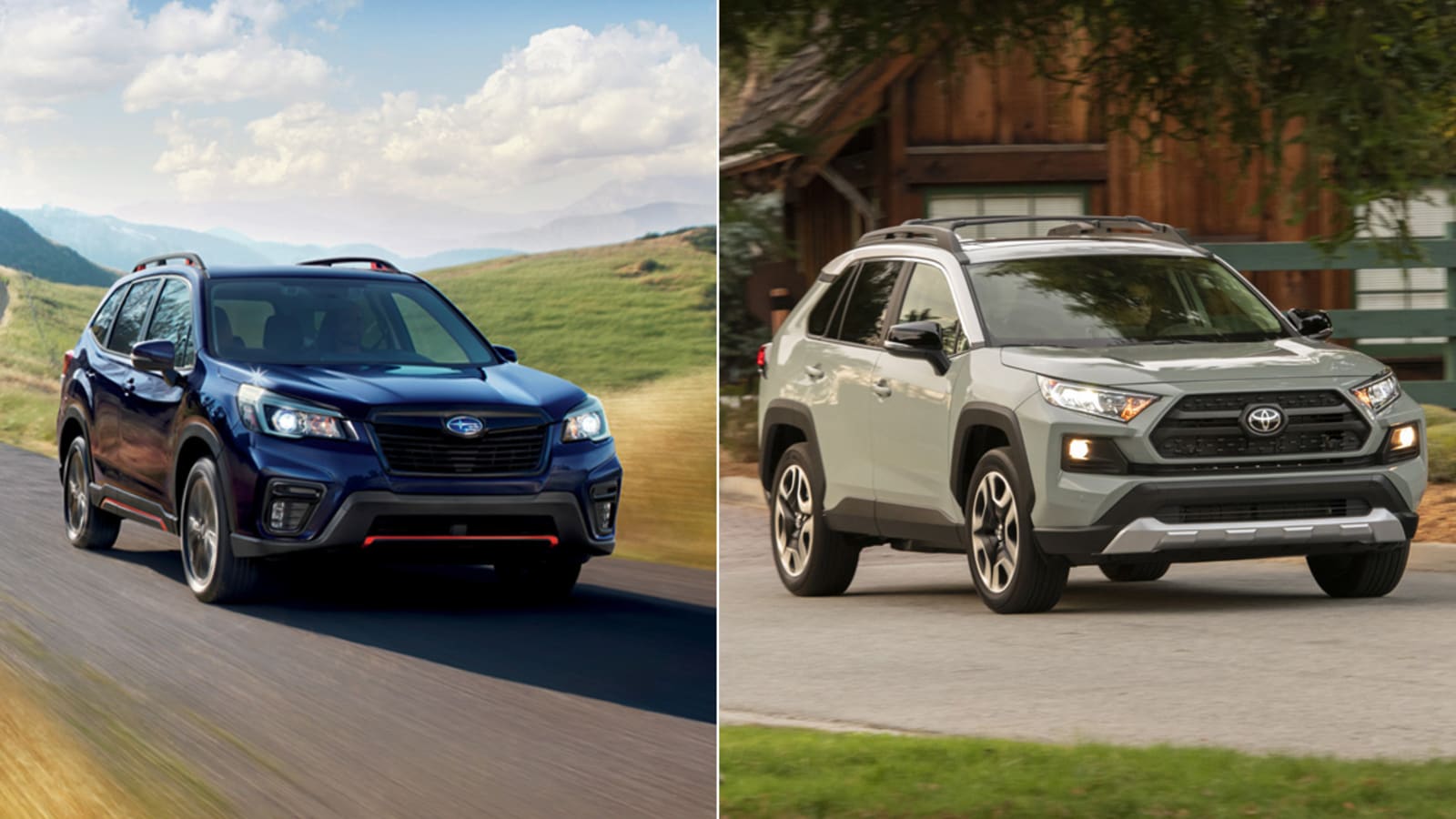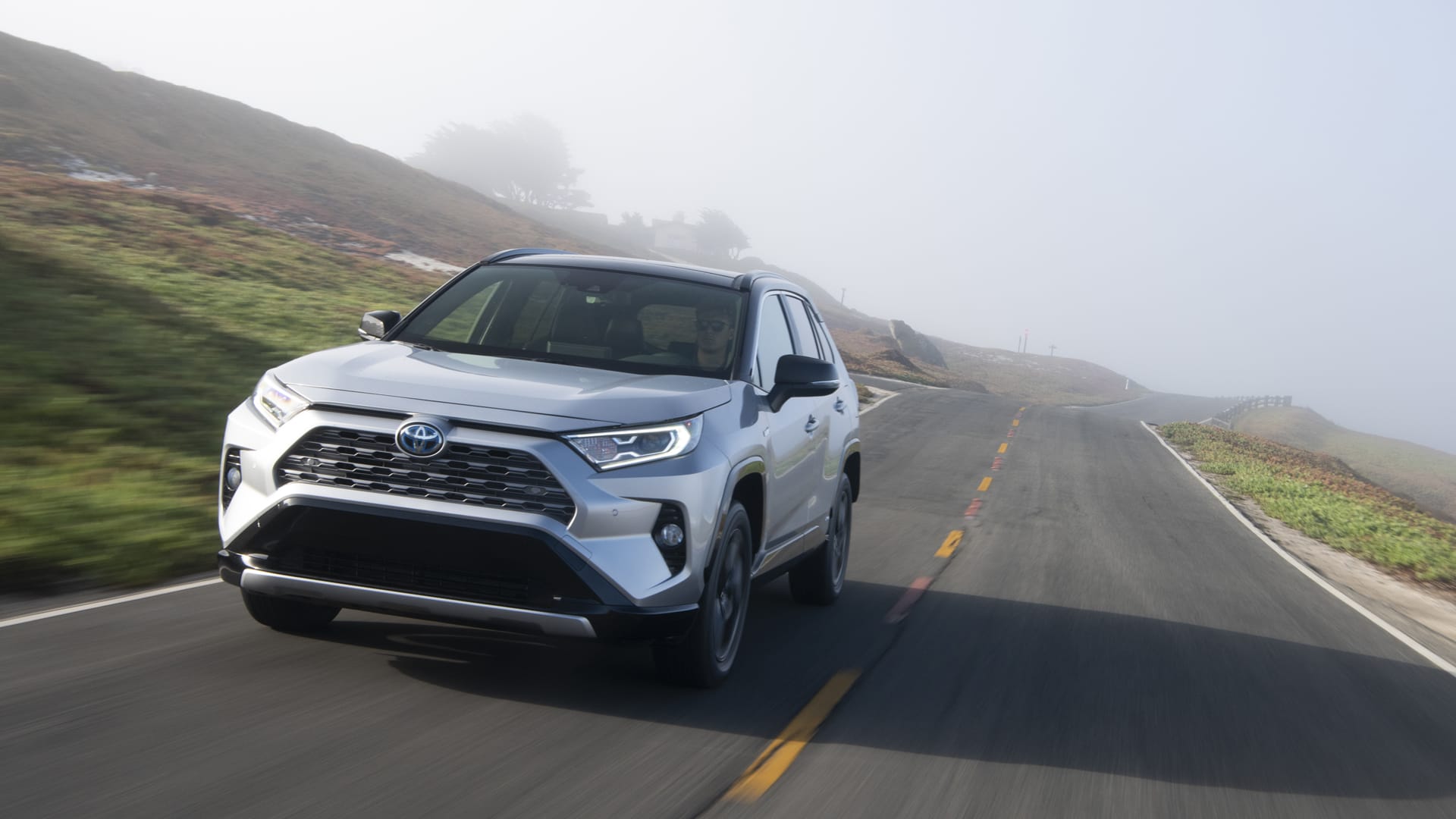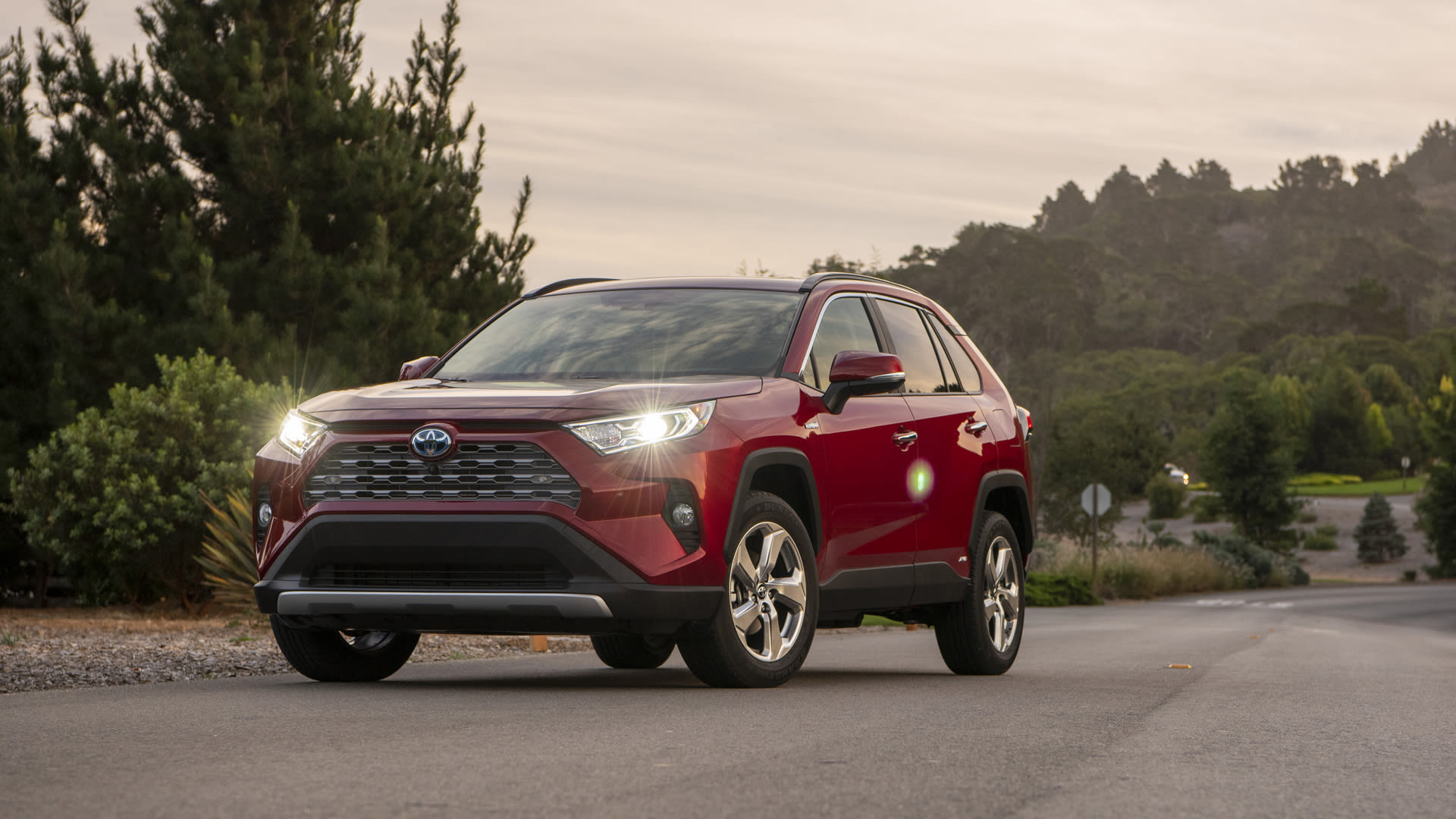2020 Toyota RAV4 Review & Buying Guide | Style and sensibility
https://ift.tt/2QrWbUA
The 2020 Toyota RAV4 may not be the uber-practical compact SUV it once was, but by nipping here and tucking there to its dimensions, the end result is a far more distinctive and characterful choice that stands a better chance of attracting people because they want one rather than simply because it’s a sensible purchase. This is especially true of the sporty-yet-efficient XSE Hybrid and the Adventure and TRD Off-Road trims that tap into the 4Runner‘s rugged cred. We especially like that each trim level looks a bit different and has special interior colors and material types, making each one represent more than just a gradual increase of feature content. At the same time, the RAV4‘s reliability, resale value and fuel economy should all be just as good for those who still just need that sensible purchase.
What’s new for 2020?
After being completely redesigned last year, there are a few key updates for the 2020 RAV4. A new TRD Off-Road model debuts, going beyond the existing Adventure trim level with upgraded suspension, lighter and more rigid wheels, and all-terrain/snow-rated tires. It also gets an exclusive gray/white color combination, special upholstery and a host of all-weather mats.
Elsewhere in the RAV4 lineup, features availability has been tweaked to more closely reflect customer tastes after a year on the market. The Adventure now comes standard with a leather-wrapped wheel, for instance, while the Limited now comes standard with JBL audio. Notably, Android Auto joins Apple CarPlay as standard equipment on every RAV4 along with satellite radio.
What’s the interior and in-car technology like?
Interior materials and finishes are good for the RAV4’s compact crossover class, and much better than past generations. That said, the RAV4 never achieves the near-luxury vibe that a Honda CR-V or Mazda CX-5 can. Genuine leather is not available, and the SofTex vinyl that comes on up-level models isn’t a convincing substitute. Nevertheless, we like the colorful trim pieces in certain trim levels, while there are plenty of niceties like ventilated front seats, heated rear seats, a panoramic sunroof and soft-touch materials covering the dash and doors.
All RAV4’s but the base LE get a large, 8-inch touchscreen placed high atop the dash, which makes it easy to see and reach (even if it isn’t the best system to use). We appreciate that Toyota has included physical knobs and menu buttons to support this screen as it contributes to the system’s overall functionality (but it would be nice if some were bigger). Apple CarPlay is also standard, but Android Auto is not available. We also had trouble charging our phone with the available wireless charging pad.
In-car storage is improved over the previous RAV4, and although it doesn’t have the uber-practical center console cubbies of the Honda CR-V, there’s still a grippy place to store/charge your phone (in theory), large cupholders, a sizable under-armrest bin, and shelves built into the dash.


How big is it?
After its complete redesign last year, the Toyota RAV4 is a bit bigger in a few dimensions compared to its predecessor, but in general, it’s less spacious and ultimately less practical than before. The same can be said in relation to uber-sensible rivals like the Honda CR-V and Subaru Forester. The roof is lower and passengers may find things a little confining, especially with the optional sunroof (the RAV4 now feels an awful lot like a miniature 4Runner). Rear seat legroom is basically mid-pack, but full-sized adults and rear-facing child seats should still fit comfortably enough.
Cargo volume of 37.6 cubic feet with the back seats raised or 69.8 cubic feet with them folded is bigger and better than most compact crossovers, but also less than the Forester and CR-V. This is largely the result of that lower roof and a more raked tailgate area, but then they also contribute to the RAV4’s arguably improved styling. This would be the tradeoff, and honestly, we don’t think it should be that concerning for most shoppers. It at least benefits from clever storage features like a dual-sided cargo floor (one carpet, one easy-to-clean plastic) and a hide-away cargo cover.
We would also be remiss if we didn’t mention the RAV4’s ample ground clearance, especially in the Adventure and TRD Off-Road trim levels, which contributes to it being one of the more capable compact SUVs off the beaten path. Only the Subaru Forester and Jeep Cherokee Trailhawk have greater clearance than the RAV4 Adventure, and even the lowest RAV4 — the XSE Hybrid — still clears 8 inches. The old model was in the low 6 range.
What’s the performance and fuel economy?
There are two engine options for the 2020 Toyota RAV4. Most versions get a 2.5-liter four-cylinder engine good for 203 horsepower and 184 pound-feet of torque. No other base engine in the segment comes close to that horsepower, and a run from 0-60 mph takes an estimated 8.1 seconds.
An eight-speed automatic transmission and front-wheel drive are standard, while two all-wheel drive systems are optional depending on trim level. The first is a basic reactive system that sends power to the rear wheels in the event of slippage, whereas the second available on the Adventure, TRD Off-Road and Limited trim levels more actively sends power around, including between the rear wheels to improve wet weather traction as well as dry road handling. It also includes off-road vehicle settings for “Mud & Sand,” “Rock & Dirt” and “Snow.”
Fuel economy is an excellent 28 mpg city, 35 mpg highway and 30 mpg combined with FWD. Estimates drop only slightly with the basic AWD system: 27/34/30 in the LE and 27/33/29 mpg in the XLE trims. The more advance AWD drive system in the Limited and Adventure drops things to 24/33/28, while the TRD Off-Road goes down to a still-respectable 25/32/27 as a result of its more rugged tires.
The RAV4 Hybrid gets a different 2.5-liter engine along with three electric motors that combine to offer up 219 horsepower. The electric motor at the rear effectively gives the Hybrid standard all-wheel drive. Its 0-60 estimate is 7.8 seconds, meaning the Hybrid is not only the more fuel-efficient choice, but the higher performance one too (albeit barely).
Fuel economy for every Hybrid trim level is 41 mpg city, 38 mpg highway and 40 mpg combined. That’s exceptional for a compact SUV, but it’s also equal to the Ford Escape Hybrid.
Note that there will be a RAV4 Prime plug-in hybrid model for the 2021 model year.
What’s it like to drive?
With a stiffer platform and new-and-improved suspension and steering, the latest RAV4 isn’t the boring, anonymous crossover it once was. It may not engage like a Mazda CX-5, but there is still an eagerness to its turn-in and it demonstrates commendable poise while still offering a comfortable ride.
There are Normal and Sport driving modes, but the differences between them were negligible. So too are the differences between the myriad trim levels. We’ve driven them all, and although the gas-only XLE perhaps feels a bit lighter and more playful, and the sport-tuned XSE Hybrid a bit more caffeinated in its response to inputs, there isn’t a massive gap. That’s just fine. Every RAV4 is better to drive than many competitors — not just some niche sport variant.
In terms of the available engines, the base four-cylinder may stand out on paper, but in practice it’s merely acceptable for the segment and we found it a bit loud and buzzy. The Hybrid actually improves this, as it adds that initial kick of electric power to smooth things out. Still, prolonged acceleration reveals the typical Toyota hybrid drone. Ultimately, both of these engines are about providing good fuel economy without a penalty for drivability (there’s no throttle lag or unusual transmission programming, for instance). They succeed, but if you want more guts, you’ll have to look elsewhere.
What more can I read about the Toyota RAV4?
We try out the automotive equivalent of trail-running shoes. We take a look at their interior, their specs and what they’re like to drive. We found the Forester’s space and value compelling, but also thought the RAV4 Adventure’s style could prove to be decisive for many.

“For everyone put off by the new direction, we’re wagering many more will be attracted to the more characterful approach. Toyota may have messed with a good thing, but it didn’t mess it up.”
Our review of the off-road-oriented Adventure trim level, which boasts additional ground clearance and chunky good looks that we prefer over the standard version.
Our Quick Spin review of the RAV4 Hybrid, which we found is very nice to drive despite its intended role as the fuel-sipping option.
What features are available and what’s the price?
Pricing for the 2020 RAV4 starts at $26,545 in LE trim, including $1,045 for destination. Standard equipment includes 17-inch steel wheels, LED headlights, roof rails, rear tinted glass, a full suite of accident avoidance tech (see Safety section), adaptive cruise control, a height-adjustable driver seat, cloth upholstery, a 60/40-split reclining and folding back seat, a 7-inch touchscreen (all other trims get an 8-inch screen), one USB port, Apple CarPlay, Android Auto, Amazon Alexa integration, in-car WiFi, satellite radio and a six-speaker sound system.
From there, extra equipment is mostly added through the upper trim levels. Highlights include a power liftgate, a sunroof, proximity entry and push-button start, dual-zone automatic climate control, SofTex vinyl upholstery, a power driver seat, heated and ventilated front seats, a leather-wrapped steering wheel, driver memory settings, wireless smartphone charging, four USB ports and a JBL sound system. The various trim levels, especially the XSE Hybrid, Adventure and TRD Off-Road, feature different styling.
The pricing of all trim levels is below, all with front-wheel drive unless otherwise noted. For the gas models, all-wheel drive is basically a $1,400 option, while the hybrid adds $800 beyond that to LE, XLE or Limited. You can find more in-depth information about pricing, features and local pricing here on Autoblog.
- LE: $26,970
- XLE: $28,265
- XLE Premium: $30,970
- Adventure (AWD only): $34,075
- XSE Hybrid (AWD only): $35,1750
- Limited: $35,500
- TRD Off-Road (AWD only): $36,300
What are its safety equipment and crash ratings?
Every RAV4 comes with a comprehensive array of standard safety equipment beyond the expected and government-mandated items, including a driver knee airbag, a front passenger under-seat airbag, forward collision warning with pedestrian detection and automatic emergency braking, and a lane-keeping assist system. Blind-spot and rear cross-traffic warning systems are optional on the LE trim level and standard on all others. A rear cross-traffic automatic braking system is standard on the Limited and optional on all trims but the LE.
In government crash testing, the RAV4 received five out of five stars for overall and side crash protection. It got four stars for frontal protection. The Toyota RAV4 was named a Top Safety Pick by the Insurance Institute for Highway Safety for its best-possible performance in all crash tests and collision avoidance technology tests. Its headlights drew ratings of “Poor,” “Marginal” and “Good” depending on trim level. You can find out which ones on the IIHS ratings page.
Auto Blog
via Autoblog https://ift.tt/1afPJWx
December 30, 2019 at 09:07AM



